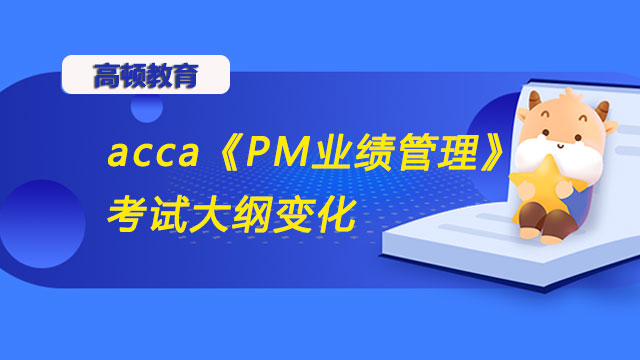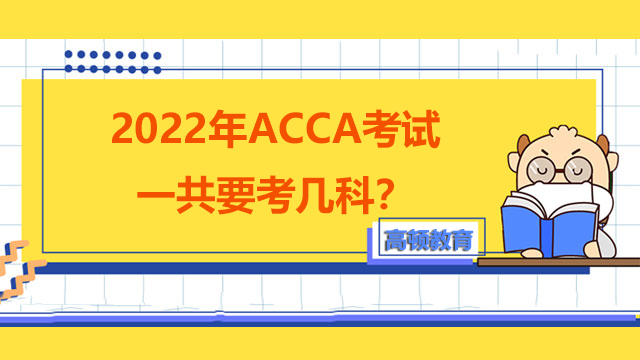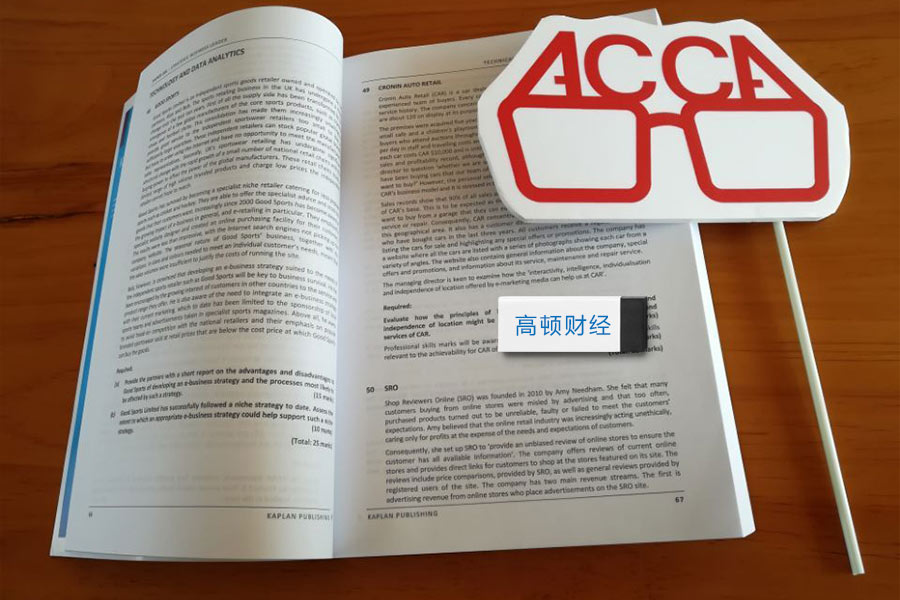2015年ACCA P3 商务分析考试大纲
来源:
高顿网校
2015-03-25
? ACCA 2014 All rights reserved.
1
Business Analysis (P3)
December 2014 and
June 2015
This syllabus and study guide is designed to help
with planning study and to provide detailed
information on what could be assessed in
any examination session.
THE STRUCTURE OF THE SYLLABUS AND
STUDY GUIDE
Relational diagram of paper with other papers
This diagram shows direct and indirect links
between this paper and other papers preceding or
following it. Some papers are directly underpinned
by other papers such as Advanced Performance
Management by Performance Management. These
links are shown as solid line arrows. Other papers
only have indirect relationships with each other
such as links existing between the accounting and
auditing papers. The links between these are shown
as dotted line arrows. This diagram indicates where
you are expected to have underpinning knowledge
and where it would be useful to review previous
learning before undertaking study.
Overall aim of the syllabus
This explains briefly the overall objective of the
paper and indicates in the broadest sense the
capabilities to be developed within the paper.
Main capabilities
This paper’s aim is broken down into several main
capabilities which divide the syllabus and study
guide into discrete sections.
Relational diagram of the main capabilities
This diagram illustrates the flows and links between
the main capabilities (sections) of the syllabus and
should be used as an aid to planning teaching and
learning in a structured way.
Syllabus rationale
This is a narrative explaining how the syllabus is
structured and how the main capabilities are linked.
The rationale also explains in further detail what the
examination intends to assess and why.
Detailed syllabus
This shows the breakdown of the main capabilities
(sections) of the syllabus into subject areas. This is
the blueprint for the detailed study guide.
Approach to examining the syllabus
This section briefly explains the structure of the
examination and how it is assessed.
Study Guide
This is the main document that students, learning
and content providers should use as the basis of
their studies, instruction and materials.
Examinations will be based on the detail of the
study guide which comprehensively identifies what
could be assessed in any examination session.
The study guide is a precise reflection and
breakdown of the syllabus. It is divided into sections
based on the main capabilities identified in the
syllabus. These sections are divided into subject
areas which relate to the sub-capabilities included
in the detailed syllabus. Subject areas are broken
down into sub-headings which describe the detailed
outcomes that could be assessed in examinations.
These outcomes are described using verbs
indicating what exams may require students to
demonstrate, and the broad intellectual level at
which these may need to be demonstrated
(*see intellectual levels below)。
INTELLECTUAL LEVELS
The syllabus is designed to progressively broaden
and deepen the knowledge, skills and professional
values demonstrated by the student on their way
through the qualification.
The specific capabilities within the detailed
syllabuses and study guides are assessed at one of
three intellectual or cognitive levels:
LevelⅠ: Knowledge and comprehension
? ACCA 2014 All rights reserved.
2
LevelⅡ: Application and analysis
LevelⅢ: Synthesis and evaluation
Very broadly, these intellectual levels relate to the
three cognitive levels at which the Knowledge
module, the Skills module and the Professional level
are assessed.
Each subject area in the detailed study guide
included in this document is given a 1, 2, or
3 superscript, denoting intellectual level, marked at
the end of each relevant line. This gives an
indication of the intellectual depth at which an area
could be assessed within the examination. However,
while level 1 broadly equates with the Knowledge
module, level 2 equates to the Skills module and
level 3 to the Professional level, some lower level
skills can continue to be assessed as the student
progresses through each module and level. This
reflects that at each stage of study there will be a
requirement to broaden, as well as deepen
capabilities. It is also possible that occasionally
some higher level capabilities may be assessed at
lower levels.
LEARNING HOURS AND EDUCATION
RECOGNITION
The ACCA qualification does not prescribe or
recommend any particular number of learning hours
for examinations because study and learning
patterns and styles vary greatly between people and
organisations. This also recognises the wide
diversity of personal, professional and educational
circumstances in which ACCA students find
themselves.
As a member of the International Federation of
Accountants, ACCA seeks to enhance the education
recognition of its qualification on both national and
international education frameworks, and with
educational authorities and partners globally. In
doing so, ACCA aims to ensure that its qualifications
are recognized and valued by governments,
regulatory authorities and employers across all
sectors. To this end, ACCA qualifications are
currently recognized on the education frameworks in
several countries. Please refer to your national
education framework regulator for further
information.
Each syllabus contains between 23 and 35 main
subject area headings depending on the nature of
the subject and how these areas have been broken
down.
GUIDE TO EXAM STRUCTURE
The structure of examinations varies within and
between modules and levels.
The Fundamentals level examinations contain
100% compulsory questions to encourage
candidates to study across the breadth of each
syllabus.
The Knowledge module is assessed by equivalent
two-hour paper based and computer based
examinations.
The Skills module examinations F5-F9 are all paper
based three-hour papers containing a mix of
objective and longer type questions. The Corporate
and Business Law (F4) paper is a two- hour
computer based objective test examination which is
also available as a paper based version from the
December 2014 examination session.
The Professional level papers are all three-hour
paper based examinations, all containing two
sections. Section A is compulsory, but there will be
some choice offered in Section B.
For all three hour examination papers, ACCA has
introduced 15 minutes reading and planning time.
This additional time is allowed at the beginning of
each three-hour examination to allow candidates to
read the questions and to begin planning their
answers before they start writing in their answer
books. This time should be used to ensure that all
the information and exam requirements are properly
read and understood.
During reading and planning time candidates may
only annotate their question paper. They may not
write anything in their answer booklets until told to
do so by the invigilator.
The Essentials module papers all have a Section A
containing a major case study question with all
requirements totalling 50 marks relating to this
case. Section B gives students a choice of two from
three 25 mark questions.
? ACCA 2014 All rights reserved.
3
Section A of both the P4 and P5 Options papers
contain one 50 mark compulsory question, and
Section B will offer a choice of two from three
questions each worth 25 marks each.
Section A of each of the P6 and P7 Options papers
contains 60 compulsory marks from two questions;
question 1 attracting 35 marks, and question 2
attracting 25 marks. Section B of both these
Options papers will offer a choice of two from three
questions, with each question attracting 20 marks.
All Professional level exams contain four
professional marks.
The pass mark for all ACCA Qualification
examination papers is 50%.
GUIDE TO EXAMINATION ASSESSMENT
ACCA reserves the right to examine anything
contained within the study guide at any examination
session. This includes knowledge, techniques,
principles, theories, and concepts as specified.
For the financial accounting, audit and assurance,
law and tax papers except where indicated
otherwise, ACCA will publish examinable
documents once a year to indicate exactly
what regulations and legislation could potentially be
assessed within identified examination sessions
For paper based examinations regulation issued or
legislation passed on or before 31st August annually,
will be examinable from 1st September of the
following year to 31st August t of the year after that.
Please refer to the examinable documents for the
paper (where relevant) for further information.
Regulation issued or legislation passed in
accordance with the above dates may be
examinable even if the effective date is in the future.
The term issued or passed relates to when
regulation or legislation has been formally approved.
The term effective relates to when regulation or
legislation must be applied to an entity transactions
and business practices.
The study guide offers more detailed guidance on
the depth and level at which the examinable
documents will be examined. The study guide
should therefore be read in conjunction with the
examinable documents list.
? ACCA 2014 All rights reserved.
4
Syllabus
AIM
To apply relevant knowledge, skills, and exercise
professional judgement in assessing strategic
position, determining strategic choice, and
implementing strategic action through beneficial
business process and structural change;
coordinating knowledge systems and information
technology and by effectively managing processes,
projects, and people within financial and other
resource constraints.
MAIN CAPABILITIES
On successful completion of this paper, candidates
should be able to:
A Assess the strategic position of an organisation
B Evaluate the strategic choices available to an
organisation
C Discuss how an organisation might go about its
strategic implementation
D Evaluate and redesign business processes and
structures to implement and support the
organisation’s strategy taking account of
customer and other major stakeholder
requirements
E Integrate appropriate information technology
solutions to support the organisation’s strategy
F Advise on the principles of project management
to enable the implementation of aspects of the
organisation’s strategy with the twin objectives
of managing risk and ensuring benefits
realisation
G Analyse and evaluate the effectiveness of a
company’s strategy and the financial
consequences of implementing strategic
decisions
H Assess the role of leadership and people
management in formulating and implementing
business strategy.
RELATIONAL DIAGRAM OF MAIN CAPABILITIES
AB (F1)
BA (P3)
PM (F5)
APM (P5)
FR (F7)
Strategic Position (A)
Strategic Choices (B)
Strategic Action (C)
Business
and
process
change (D)
Information
technology
(E)
Project
management
(F)
Financial
analysis
(G)
People (H)
position choices action
? ACCA 2014 All rights reserved.
5
RATIONALE
The syllabus for Paper P3, Business Analysis, is
primarily concerned with two issues. The first is the
external forces (the behaviour of customers, the
initiatives of competitors, the emergence of new
laws and regulations) that shape the environment of
an organisation. The second is the internal
ambitions and concerns (desire for growth, the
design of processes, the competences of employees,
the financial resources) that exist within an
organisation. This syllabus looks at both of these
perspectives, from assessing strategic position and
choice to identifying and formulating strategy and
strategic action. It identifies opportunities for
beneficial change that involve people, finance and
information technology. It examines how these
opportunities may be implemented through the
appropriate management of programmes and
projects.
The syllabus begins with the assessment of strategic
position in the present and in the future using
relevant forecasting techniques, and is primarily
concerned with the impact of the external
environment on the business, its internal
capabilities and expectations and how the
organisation positions itself under these constraints.
It examines how factors such as culture, leadership
and stakeholder expectations shape organisational
purpose. Strategic choice is concerned with
decisions which have to be made about an
organisation’s future and the way in which it can
respond to the influences and pressures identified in
the assessment of its current and future strategic
position.
Strategic action concerns the implementation of
strategic choices and the transformation of these
choices into organisational action. Such action takes
place in day-to-day processes and organisational
relationships and these processes and relationships
need to be managed in line with the intended
strategy, involving the effective coordination of
information technology, people, finance and other
business resources.
Companies that undertake successful business
process redesign claim significant organisational
improvements. This simply reflects the fact that
many existing processes are less efficient than they
could be and that new technology makes it possible
to design more efficient processes. Strategic
planning and strategy implementation has to be
subject to financial benchmarks. Financial analysis
explicitly recognises this, reminding candidates of
the importance of focusing on the key management
accounting techniques that help to determine
strategic action and the financial ratios and
measures that may be used to assess the viability of
a strategy and to monitor and measure its success.
Throughout, the syllabus recognises that successful
strategic planning and implementation requires the
effective recruitment, leadership, organisation and
training and development of people.
? ACCA 2014 All rights reserved.
6
DETAILED SYLLABUS
A Strategic position
1. The need for, and purpose of, strategic and
business analysis
2. Environmental issues affecting the strategic
position of, and future outlook for, an
organisation
3. Competitive forces affecting an organisation
4. Marketing and the value of goods and services
5. The internal resources, capabilities and
competences of an organisation
6. The expectations of stakeholders and the
influence of ethics and culture
B Strategic choices
1. The influence of corporate strategy on an
organisation
2. Alternative approaches to achieving
competitive advantage
3. Alternative directions and methods of
development
C Strategic action
1. Organising and enabling success
2. Managing strategic change
3. Understanding strategy development
D Business and process change
1. Business change
2. The role of process and process change
initiatives
3. Improving the processes of the organisation
4. Software solutions
E Information technology
1. Principles of information technology
2. Principles of e-business
3. E-business application: upstream supply chain
management
4. E-business application: downstream supply
chain management
5. E-business application: customer relationship
management
F Project management
1. The nature of projects
2. Building a business case
3. Managing and leading projects
4. Planning, monitoring and controlling projects
5. Concluding a project
G Financial Analysis
1. The link between strategy and finance
2. Finance decisions to formulate and support
business strategy
3. The role of cost and management accounting in
strategic planning and implementation
4. Financial implications of making strategic
choices and of implementing strategic actions
H People
1. Strategy and people: leadership
2. Strategy and people: job design
3. Strategy and people: staff development
? ACCA 2014 All rights reserved.
7
APPROACH TO EXAMINING THE SYLLABUS
The syllabus is assessed by a three-hour paperbased
examination.
Section A
Section A contains one multi-part question based on
a case study scenario. This question is worth 50
marks.
Section B
Section B will consist of three discrete questions
each worth 25 marks. Candidates must answer two
questions from this section.
Total: 100 marks
? ACCA 2014 All rights reserved.
8
Study Guide
A STRATEGIC POSITION
1. The need for, and purpose of, strategic and
business analysis
a) Recognise the fundamental nature and
vocabulary of strategy and strategic
decisions.[2]
b) Discuss how strategy may be formulated at
different levels (corporate, business level,
operational) of an organisation.[2]
c) Explore the Johnson, Scholes and Whittington
model for defining elements of strategic
management – the strategic position, strategic
choices and strategy into action.[3]
d) Analyse how strategic management is affected
by different organisational contexts.[3]
e) Compare three different strategy lenses
(Johnson, Scholes and Whittington) for viewing
and understanding strategy and strategic
management.[3]
f) Explore the scope of business analysis and its
relationship to strategy and strategic
management in the context of the relational
diagram of this syllabus.[3]
2. Environmental issues affecting the strategic
position of, and future outlook for, an
organisation
a) Assess the macro-environment of an
organisation using PESTEL.[3]
b) Highlight the external key drivers of change
likely to affect the structure of a sector or
market.[3]
c) Explore, using Porter’s Diamond, the influence
of national competitiveness on the strategic
position of an organisation.[2]
d) Prepare scenarios reflecting different
assumptions about the future environment of
an organisation.[3]
e) Evaluate methods of business forecasting used
when quantitatively assessing the likely
outcome of different business strategies.[3]
3. Competitive forces affecting an organisation
a) Discuss the significance of industry, sector and
convergence.[3]
b) Evaluate the sources of competition in an
industry or sector using Porter’s five forces
framework.[3]
c) Assess the contribution of the lifecycle model,
the cycle of competition and associated costing
implications to understanding competitive
behaviour.[3]
d) Analyse the influence of strategic groups and
market segmentation.[3]
e) Determine the opportunities and threats posed
by the environment of an organisation.[2]
4. Marketing and the value of goods and services
a) Analyse customers and markets[2]
b) Establish appropriate critical success factors
(CSF) and key performance indicators (KPI) for
products and services[2]
c) Explore the role of the value chain in creating
and sustaining competitive advantage.[2]
d) Advise on the role and influence of value
networks.[3]
e) Assess different approaches to benchmarking
an organisation’s performance.[3]
5. The internal resources, capabilities and
competences of an organisation
a) Discriminate between strategic capability,
threshold resources, threshold competences,
unique resources and core competences.[3]
b) Discuss from a strategic perspective, the
continuing need for effective cost management
and control systems within organisations.[3]
? ACCA 2014 All rights reserved.
9
c) Discuss the capabilities required to sustain
competitive advantage.[2]
d) Explain the impact of new product, process,
and service developments and innovation in
supporting business strategy.[2]
e) Discuss the contribution of organisational
knowledge to the strategic capability of an
organisation.[2]
f) Determine the strengths and weaknesses of an
organisation and formulate an appropriate
SWOT analysis.[2]
6. The expectations of stakeholders and the
influence of ethics and culture
a) Advise on the implications of corporate
governance on organisational purpose and
strategy.[2]
b) Evaluate, through stakeholder mapping, the
relative influence of stakeholders on
organisational purpose and strategy.[3]
c) Assess ethical influences on organisational
purpose and strategy.[3]
d) Explore the scope of corporate social
responsibility.[3]
e) Assess the impact of culture on organisational
purpose and strategy.[3]
f) Prepare and evaluate a cultural web of an
organisation.[2]
g) Advise on how organisations can communicate
their core values and mission.[3]
h) Explain the role of integrated reporting in
communicating strategy and strategic
performance.[2]
B STRATEGIC CHOICES
1. The influence of corporate strategy on an
organisation
a) Explore the relationship between a corporate
parent and its business units.[2]
b) Assess the opportunities and potential
problems of pursuing different corporate
strategies of product/market diversification from
a national, international and global
perspective.[3]
c) Assess the opportunities and potential
problems of pursuing a corporate strategy of
international diversity, international scale
operations and globalisation.[3]
d) Discuss a range of ways that the corporate
parent can create and destroy organisational
value.[2]
e) Explain three corporate rationales for adding
value – portfolio managers, synergy managers
and parental developers.[3]
f) Explain and apply the following portfolio
models (the BCG growth/share matrix, public
sector matrix, the parenting matrix or Ashridge
Portfolio display) to assist corporate parents in
managing their business portfolios.[3]
2. Alternative approaches to achieving
competitive advantage
a) Evaluate, through the strategy clock, generic
strategy options available to an organisation.[3]
b) Advise on how price-based strategies,
differentiation and lock-in can help an
organisation sustain its competitive
advantage.[3]
c) Assess opportunities for improving
competitiveness through collaboration.[3]
3. Alternative directions and methods of
development
a) Determine generic development directions
(employing an adapted Ansoff matrix and a
TOWS matrix) available to an organisation.[2]
b) Assess how internal development, mergers,
acquisitions, strategic alliances and franchising
can be used as different methods of pursuing a
chosen strategic direction.[3]
? ACCA 2014 All rights reserved.
10
c) Establish success criteria to assist in the choice
of a strategic direction and method (strategic
options)。[2]
d) Assess the suitability of different strategic
options to an organisation.[3]
e) Assess the feasibility of different strategic
options to an organisation.[3]
f) Establish the acceptability of strategic options
to an organisation through analysing risk and
return on investment.[3]
C STRATEGIC ACTION
1. Organising and enabling success
a) Advise on how the organisation can be
structured to deliver a selected strategy.[3]
b) Explore generic processes that take place
within the structure, with particular emphasis
on the planning process.[3]
c) Discuss how internal relationships can be
organised to deliver a selected strategy.[2]
d) Discuss how organisational structure and
external relationships (boundary-less
organisations; hollow, modular and virtual) and
strategic alliances (joint ventures, networks,
franchising, licensing) and the supporting
concepts of outsourcing, offshoring and shared
services, can be used to deliver a selected
strategy.[2]
e) Explore (through Mintzberg’s organisational
configurations) the design of structure,
processes and relationships.[3]
2. Managing strategic change
a) Explore different types of strategic change and
their implications.[2]
b) Determine and diagnose the organisational
context of change using Balogun and Hope
Hailey’s contextual features model and the
cultural web.[3]
c) Establish potential blockages and levers of
change.[2]
d) Advise on the style of leadership appropriate to
manage strategic change.[2]
3. Understanding strategy development
a) Discriminate between the concepts of intended
and emergent strategies.[3]
b) Explain how organisations attempt to put an
intended strategy into place.[2]
c) Highlight how emergent strategies appear from
within an organisation.[3]
d) Discuss how process redesign, and e-business
can contribute to emergent strategies.[2]
e) Assess the implications of strategic drift and
the demand for multiple processes of strategy
development.[3]
D BUSINESS AND PROCESS CHANGE
1. Business change
a) Explain that business change projects are
initiated to address strategic alignment.[2]
b) Apply the stages of the business change
lifecycle (alignment, definition, design,
implementation, realisation)。[3]
c) Assess the value of the four view (POPIT –
people, organisation, processes and
information technology) model to the
successful implementation of business
change [3]
2. The role of process and process change initiatives
a) Advise on how an organisation can reconsider
the design of its processes to deliver a selected
strategy.[3]
b) Appraise business process change initiatives
previously adopted by organisations.[3]
c) Establish an appropriate scope and focus for
business process change using Harmon’s
process-strategy matrix.[3]
d) Explore the commoditisation of business
processes.[3]
? ACCA 2014 All rights reserved.
11
e) Advise on the implications of business process
outsourcing.[3]
f) Recommend a business process redesign
methodology for an organisation.[2]
3. Improving the processes of the organisation
a) Evaluate the effectiveness of current
organisational processes.[3]
b) Describe a range of process redesign
patterns.[2]
c) Establish possible redesign options for
improving the current processes of an
organisation.[2]
d) Assess the feasibility of possible redesign
options.[3]
e) Assess the relationship between process
redesign and strategy.[3]
4. Software solutions
a) Establish information system requirements
required by business users.[2]
b) Assess the advantages and disadvantages of
using a generic software solution to fulfil those
requirements.[2]
c) Establish a process for evaluating, selecting
and implementing a generic software
solution.[2]
d) Explore the relationship between generic
software solutions and business process
redesign.[2]
E INFORMATION TECHNOLOGY
1. Principles of information technology
a) Advise on the basic hardware and software
infrastructure required to support business
information systems[2].
b) Identify and analyze general information
technology controls and application controls
required for effective accounting information
systems[2].
c) Analyze the adequacy of general information
technology controls and application controls for
relevant application systems[3].
d) Evaluate controls over the safeguarding of
information technology assets to ensure the
organizational ability to meet business
objectives[3].
2. Principles of e-business
a) Discuss the meaning and scope of ebusiness.[
2]
b) Advise on the reasons for the adoption of ebusiness
and recognise barriers to its
adoption.[3]
c) Evaluate how e-business changes the
relationships between organisations and their
customers.[3]
d) Discuss and evaluate the main business and
marketplace models for delivering e-business.[3]
3. E-business application: upstream supply chain
management
a) Analyse the main elements of both the push
and pull models of the supply chain.[2]
b) Discuss the relationship of the supply chain to
the value chain and the value network.[2]
c) Assess the potential application of information
technology to support and restructure the
supply chain.[3]
d) Advise on how external relationships with
suppliers and distributors can be structured to
deliver a restructured supply chain.[3]
e) Discuss the methods, benefits and risks of eprocurement.[
2]
f) Assess different options and models for
implementing e-procurement.[2]
4. E-business application: downstream supply
chain management
a) Define the scope and media of e-marketing.[2]
? ACCA 2014 All rights reserved.
12
b) Highlight how the media of e-marketing can be
used when developing an effective e-marketing
plan.[2]
c) Explore the characteristics of the media of emarketing
using the ‘6I’s of Interactivity,
Intelligence, Individualisation, Integration,
Industry structure and Independence of
location.[2]
d) Evaluate the effect of the media of e-marketing
on the traditional marketing mix of product,
promotion, price, place, people, processes and
physical evidence.[3]
e) Describe a process for establishing a pricing
strategy for products and services that
recognises both economic and non-economic
factors.[2]
f) Assess the importance of on-line branding in emarketing
and compare it with traditional
branding.[2]
5. E-business application: customer relationship
management
a) Define the meaning and scope of customer
relationship management.[2]
b) Explore different methods of acquiring
customers through exploiting electronic
media.[2]
c) Evaluate different buyer behaviour amongst online
customers.[3]
d) Recommend techniques for retaining
customers using electronic media.[2]
e) Recommend how electronic media may be
used to increase the activity and value of
established, retained customers.[2]
f) Discuss the scope of a representative software
package solution designed to support customer
relationship management.[2]
F PROJECT MANAGEMENT
1. The nature of projects
a) Determine the distinguishing features of
projects and the constraints they operate in.[2]
b) Discuss the implications of the triple constraint
of scope, time and cost.[2]
c) Discuss the relationship between organisational
strategy and project management.[2]
d) Identify and plan to manage risks. [2]
e) Advise on the structures and information that
have to be in place to successfully initiate a
project.[3]
f) Explain the relevance of projects to process redesign
and e-business systems development.[2]
2. Building the business case
a) Describe the structure and contents of a
business case document.[2]
b) Analyse, describe, assess and classify benefits
of a project investment.[3]
c) Analyse, describe, assess and classify the costs
of a project investment[3]
d) Evaluate the costs and benefits of a business
case using standard techniques
e) Establish responsibility for the delivery of
benefits[2]
f) Explain the role of a benefits realisation
plan[2]
3. Managing and leading projects
a) Discuss the organisation and implications of
project-based team structures.[2]
b) Establish the role and responsibilities of the
project manager and the project sponsor.[2]
c) Identify and describe typical problems
encountered by a project manager when
leading a project.[2]
? ACCA 2014 All rights reserved.
13
d) Advise on how these typical problems might be
addressed and overcome.[3]
4. Planning, monitoring and controlling projects
a) Discuss the principles of a product breakdown
structure [2]
b) Assess the importance of developing a
project plan and discuss the work required to
produce this plan.[3]
c) Monitor the status of a project and identify
project risks, issues, slippage and changes.[2]
d) Formulate responses for dealing with project
risks, issues, slippage and changes.[2]
e) Discuss the role of benefits management and
project gateways in project monitoring.[2]
5. Concluding a project
a) Establish mechanisms for successfully
concluding a project.[2]
b) Discuss the relative meaning and benefits of a
post-implementation and a post-project
review.[2]
c) Discuss the meaning and value of benefits
realisation.[2]
d) Evaluate how project management software
may support the planning and monitoring of a
project.[3]
e) Apply 'lessons learned' to future business case
validation and to capital allocation decisions.[3]
G FINANCIAL ANALYSIS
1. The link between strategy and finance
a) Explain the relationship between strategy and
finance [3]
i) Managing for value
ii) Financial expectations of stakeholders
iii) Funding strategies
2. Finance decisions to formulate and support
business strategy
a) Determine the overall investment requirements
of the business.[2]
b) Evaluate alternative sources of finance for these
investments and their associated risks.[3]
c) Efficiently and effectively manage the current
and non-current assets of the business from a
finance and risk perspective.[2]
3. The role of cost and management accounting
in strategic planning and decision-making
a) Explain the role, advantages and possible
limitations of a budgetary process.[2]
b) Explain the principles of standard costing, its
role in variance analysis and suggest possible
reasons for identified variances.[3]
c) Evaluate strategic and operational decisions
taking into account risk and uncertainty using
decision trees.[3]
d) Evaluate the following strategic options using
marginal and relevant costing techniques.[3]
i) Make or buy decisions
ii) Accepting or declining special contracts
iii) Closure or continuation decisions
iv) Effective use of scarce resources
e) Evaluate the role and limitations of cost
accounting in strategy development and
implementation, specifically relating to:[2]
i) Direct and indirect costs in multi-product
contexts
ii) Overhead apportionment in full costing
iii) Activity based costing in planning and
control
4. Financial implications of making strategic
choices and of implementing strategic actions
a) Apply efficiency ratios to assess how efficiently
an organisation uses its current resources.[2]
b) Apply appropriate gearing ratios to assess the
risks associated with financing and investment
in the organisation.[2]
? ACCA 2014 All rights reserved.
14
c) Apply appropriate liquidity ratios to assess the
organisation’s short-term commitments to
creditors and employees.[2]
d) Apply appropriate profitability ratios to assess
the viability of chosen strategies.[2]
e) Apply appropriate investment ratios to assist
investors and shareholders in evaluating
organisational performance and strategy.[2]
H PEOPLE
(Note that Section H of the syllabus is underpinned
directly by knowledge gained in F1, Accountant in
Business. Students are expected to be familiar with
the following Study Guide subject areas from that
syllabus: A1, A2, B1-B3, D1, and D4-D6)
1. Strategy and people: leadership
a) Explain the role of visionary leadership and
identify the key leadership traits effective in the
successful formulation and implementation of
strategy and change management.[3]
b) Apply and compare alternative classical and
modern theories of leadership in the effective
implementation of strategic objectives.[3]
2. Strategy and people: job design
a) Assess the contribution of four different
approaches to job design (scientific
management, job enrichment, Japanese
management and re-engineering)。[3]
b) Explain the human resource implications of
knowledge work and post-industrial job
design.[2]
c) Discuss the tensions and potential ethical
issues related to job design.[2]
d) Advise on the relationship of job design to
process re-design, project management and the
harnessing of e-business opportunities.[3]
3. Strategy and people: staff development
a) Discuss the emergence and scope of human
resource development, succession planning
and their relationship to the strategy of the
organisation.[2]
b) Advise and suggest different methods of
establishing human resource development.[3]
c) Advise on the contribution of competency
frameworks to human resource development.[3]
d) Discuss the meaning and contribution of
workplace learning, the learning organisation,
organisation learning and knowledge
management.[3]
? ACCA 2014 All rights reserved.
15
SUMMARY OF CHANGES TO P3
ACCA annually reviews its qualification so that they fully meet the needs of stakeholders including employers,
students, regulatory and advisory bodies and learning providers. These syllabus changes are effective from
December 2014 and thereafter will be updated with effect from 1st September each year, from September 2015
onwards.
The changes are introduced to the syllabus to reflect the latest business and educational developments affecting
this paper. These are summarised in the table below.
Summary of changes to P3 (Table):
Section and subject area Syllabus content
Subject area A2 heading amended Environmental issues affecting the strategic
position of, and future outlook for, an organisation
A2b amended to add ‘external’ Highlight the external key drivers of change likelyt
to affect the structure of a sector or market
A5f Deleted Identify opportunities for managing the strategic
capability of an organisation
A6h) Added Explain the role of integrated reporting in
communicating strategy and strategic
performance
B1f) Amended to delete and add models Explain and apply the following portfolio models
(the BCG growth/share matrix, the public sector
portfolio matrix, the parenting matrix or Ashridge
Portfolio Display) to assist corporate parents in
managing their business portfolios
B2c) Deleted Explore how organisations can respond to
hypercompetitive conditions
C1d Amended Discuss how organisational structure and
external relationships (boundary-less
organisations; hollow, modular and virtual) and
strategic alliances (joint ventures, networks,
franchising, licensing) and the supporting
concepts of outsourcing, offshoring and shared
services, can be used to deliver a selected
strategy
C2e) and f) Deleted Specify organisational roles required to manage
strategic change
Discuss levers that can be employed to manage
strategic change
Section D heading amended and
New D1 Subject area added
D BUSINESS AND PROCESS CHANGE
1.Business change
a) Explain that business change projects are
initiated to address strategic alignment.[2]
b) Apply the stages of the business change
lifecycle (alignment, definition, design,
implementation and realisation)
c) Assess the value of the four view (POPIT –
people, organisation, processes and
? ACCA 2014 All rights reserved.
16
information
technology) model to the successful
implementation of business change
New E1 Subject area added E INFORMATION TECHNOLOGY
1. Principles of information technology
a) Advise on the basic hardware and software
infrastructure required to support business
information systems
b) Identify and analyse general information
technology controls and application controls
required for effective accounting information
systems
c) Analyse the adequacy of general information
technology controls and application controls for
relevant application systems
d) Evaluate controls over the safeguarding of
information technology assets to ensure the
organizational ability to meet business
objectives
? ACCA 2014 All rights reserved.
17
New E2e) and f) deleted e) Advise on the hardware and software
infrastructure required to support e-business.[3]
f) Advise on how the organisation can utilise
information technology to help it deliver a
selected strategy
Section H (Note added for clarification) (Note that Section H of the syllabus is
underpinned directly by knowledge gained in
F1, Accountant in Business. Students are
expected to be familiar with the following
Study Guide subject areas from that
syllabus: D1, and D4-D6)
高顿网校温馨提示: 通过ACCA考试实属不易,首先要有执着的精神,其次是不断勤奋的学习,高顿网校为大家提供ACCA题库免费做题,希望助大家一臂之力,查看详情》
| ACCA网络课程 | 课程专业名称 | 讲师 | 试听 |
 85%的人正在学习该课程 85%的人正在学习该课程 | ACCA 全维度网课体验课程 实景课堂与独立录制 覆盖所有知识点,根据学习计划推进学习进度 | 高顿名师 |  |
 70%的人正在学习该课程 70%的人正在学习该课程 | ACCA网课全科卡(8.2折) 为零基础刚开始学习ACCA的学员特别定制 | 高顿名师 |  |
精彩推荐:
版权声明:本条内容自发布之日起,有效期为一个月。凡本网站注明“来源高顿教育”或“来源高顿网校”或“来源高顿”的所有作品,均为本网站合法拥有版权的作品,未经本网站授权,任何媒体、网站、个人不得转载、链接、转帖或以其他方式使用。
经本网站合法授权的,应在授权范围内使用,且使用时必须注明“来源高顿教育”或“来源高顿网校”或“来源高顿”,并不得对作品中出现的“高顿”字样进行删减、替换等。违反上述声明者,本网站将依法追究其法律责任。
本网站的部分资料转载自互联网,均尽力标明作者和出处。本网站转载的目的在于传递更多信息,并不意味着赞同其观点或证实其描述,本网站不对其真实性负责。
如您认为本网站刊载作品涉及版权等问题,请与本网站联系(邮箱fawu@gaodun.com,电话:021-31587497),本网站核实确认后会尽快予以处理。
点一下领资料
【整理版】ACCA各科目历年真题
真题高频考点,刷题全靠这份资料
下载合集
acca全科学习思维导图
梳理核心考点,一图看懂全部章节
下载合集
2023年acca考纲解析
覆盖科目重难点,备考按照计划走
下载合集
acca备考 热门问题解答
- acca考试怎么搭配科目?
-
建议优先选择相关联的科目进行搭配报考,这样可以提高备考效率,减轻备考压力,1、F1-F4:为随时机考科目,难度较低,这里可以自行随意选择考试顺序。2、F5-F9:如果你的工作的和财务会计或者审计有关、或者你比较擅长财务和审计的话,推荐先考F7和F8。你可以选择一起考ACCA考试科目F7和F8或者先考F7(8)再考F8(7),这就要取决你一次想考几门。3、P阶段:选修科目中,建议企业首选AFM!第二部分科目进行选择,如果AA和SBR掌握学生更好,可以通过选择AAA,如果SBL掌握的好,可以自己选择APM。
- acca一共几门几年考完?
-
acca一共有15门考试科目,其中有必修科目和选修科目,考生需要考完13门科目才能拿下证书。
- acca一年考几次?
-
acca一年有4次考试,分别是3月、6月、9月和12月,分季机考科目是采取的这类四个考季的模式,而随时机考则是没有这方面的时间规定限制,可以随报随考。
- acca的含金量如何?
-
ACCA证书的含金量是比较高的,从就业、能力提升、全球认可等角度来说,都是比较有优势的证书,其含金量主要表现在以下几个方面:1、国际化,认可度高;2、岗位多,就业前景好;3、缺口大,人才激励。
严选名师 全流程服务
其他人还搜了
热门推荐
-
长春ACCA培训课程,高顿ACCA推荐吗? 2023-06-19
-
【考试重点】acca2023年9月SBL变化详解,速进了解! 2023-06-19
-
acca《PM业绩管理》考试大纲变化,2023年9月起变动情况一览! 2023-04-26
-
2023年6月acca考试哪些科目考纲有变化?赶快来看! 2023-04-25
-
ACCA2023年考试重点介绍,新手看过来! 2023-03-29
-
9月acca考试考纲变了吗?这些科目变动你要了解! 2023-03-10
-
acca考纲每次变化大吗?2023年9月起变动0%-12%! 2023-03-10
-
ACCA科目名称英文一览 2022-05-23
-
ACCA都考什么内容? 2022-05-20
-
ACCA课程内容介绍 2022-05-12
-
2022年ACCA考试一共要考几科? 2022-05-11
-
ACCA的考试内容都有什么? 2022-05-10
-
ACCA官网操作 | 如何鉴别自己是FIA还是ACCA&考试报名退考流程 2021-06-30
-
2020年最新ACCA考试大纲哪里找? 2020-03-04
-
2014年12月ACCA考试改动方向及难度变化,资阳考生必看! 2019-01-04
-
2014年12月ACCA考试改动方向及难度变化,资阳考生必看! 2019-01-04
-
2018年ACCA考试新旧考纲变化详解 2019-01-02
-
12月ACCA考试前瞻:2017年9月ACCA F7考试分析 2017-11-21
-
ACCA考试F8考试大纲变化解析 2017-04-19
-
ACCA考试F7考纲变化分析 2017-01-04
-
acca福建厦门考点i831在哪里 2016-12-19
-
拉萨有没有比较好的ACCA培训机构? 2016-06-29
-
石嘴山有没有比较好的ACCA培训机构? 2016-06-29
-
嘉峪关有没有比较好的ACCA培训机构? 2016-06-29
-
吐鲁番有没有比较好的ACCA培训机构? 2016-06-29
-
武夷山有没有比较好的ACCA培训机构? 2016-06-29
-
保山有没有比较好的ACCA培训机构? 2016-06-22
-
果洛有没有比较好的ACCA培训机构? 2016-06-22
-
临夏有没有比较好的ACCA培训机构? 2016-06-22
-
喀什有没有比较好的ACCA培训机构? 2016-06-22
 更多服务
更多服务





























